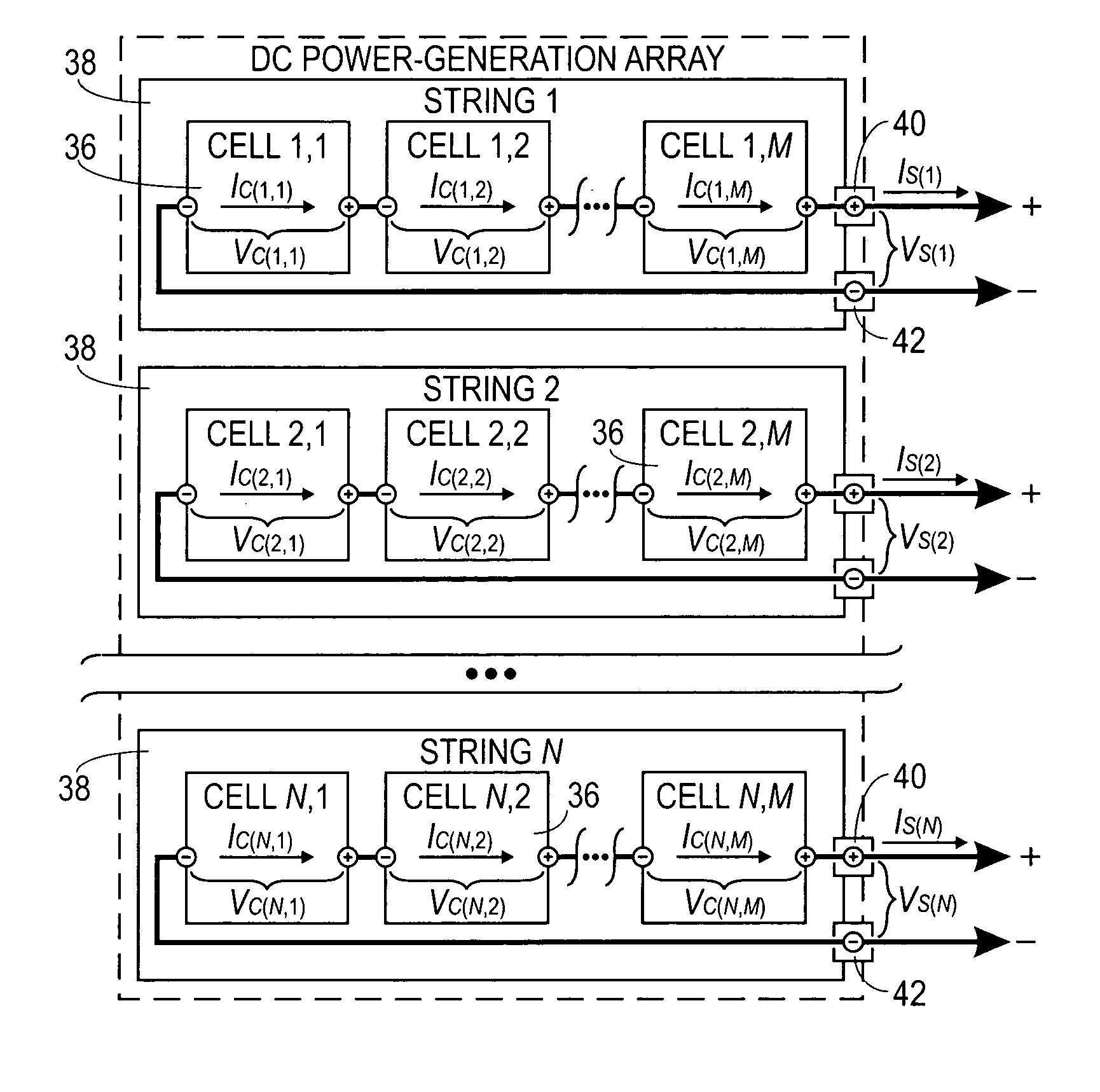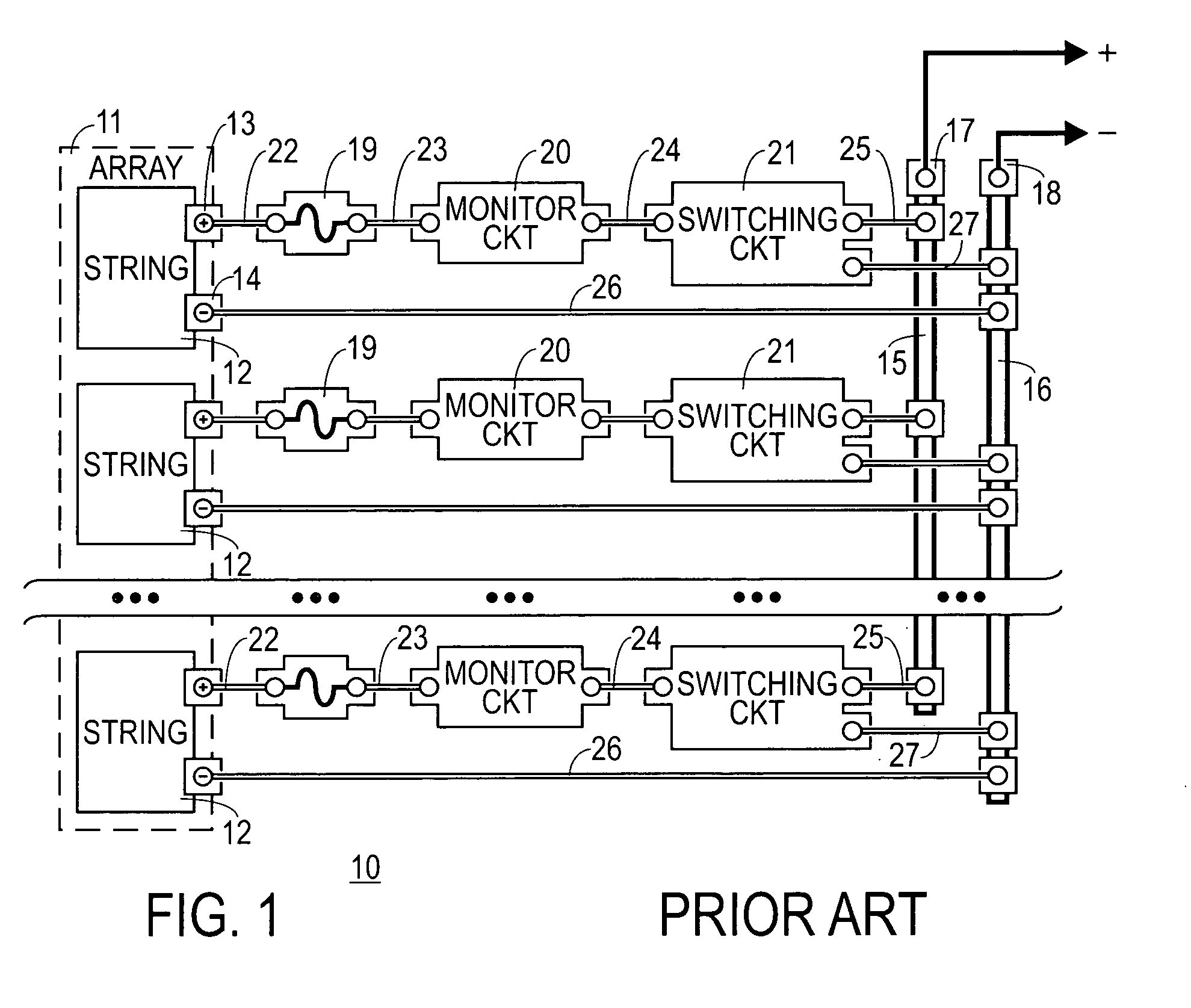DC power-generation system and integral control apparatus therefor
a power generation system and control apparatus technology, applied in the direction of generator/motor, parallel/serial switching, light radiation electric generator, etc., can solve the problems of reducing the number of interconnections involved, and affecting the operation of the system. achieve the effect of reducing assembly tim
- Summary
- Abstract
- Description
- Claims
- Application Information
AI Technical Summary
Benefits of technology
Problems solved by technology
Method used
Image
Examples
Embodiment Construction
[0035] This discussion presumes the use of a solar photovoltaic array, where the array consists of a plurality of strings of photovoltaic cells in series. It will be appreciated by those skilled in the art, however, that arrays of other “cellular” electrical generation components may be used. For example, in a thermovoltaic array, a “cell” may be a single thermocouple or thermophotovoltaic device, and a “string” may be a multitude of such devices in series, e.g., a thermopile. Alternatively, a cell might be a single voltaic cell, a single wind turbine, or the like.
[0036]FIG. 2 shows a direct-current (DC) power-generation array 32 in accordance with a preferred embodiment of the present invention. FIG. 3 shows a DC power-generation system 30 incorporating array 32 and an integral control apparatus 34 therefor in accordance with a preferred embodiment of the present invention.
[0037] Array 32 is an array of N×M DC power-generation cells 36 arranged as N strings 38 of M cells 36 each,...
PUM
 Login to View More
Login to View More Abstract
Description
Claims
Application Information
 Login to View More
Login to View More - R&D
- Intellectual Property
- Life Sciences
- Materials
- Tech Scout
- Unparalleled Data Quality
- Higher Quality Content
- 60% Fewer Hallucinations
Browse by: Latest US Patents, China's latest patents, Technical Efficacy Thesaurus, Application Domain, Technology Topic, Popular Technical Reports.
© 2025 PatSnap. All rights reserved.Legal|Privacy policy|Modern Slavery Act Transparency Statement|Sitemap|About US| Contact US: help@patsnap.com



